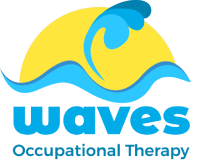Visual Motor Integration and Visual Perception: The Cornerstones of Functional Development

Visual-Motor Integration and Visual Perception are pivotal components of human development, significantly impacting an individual’s ability to engage in daily activities effectively. As an Occupational Therapist specialising in supporting children and adults with a wide range of challenges, it’s crucial to understand the role these processes play in the lives of those under my care. This article explores the concepts of Visual Motor Integration and Visual Perception, emphasizing their importance and providing insights into assessment and intervention strategies.
Visual Motor Integration: Bridging Vision and Movement
Visual Motor Integration, often referred to as eye-hand coordination, is the ability to coordinate visual information with precise motor movements. This skill is indispensable for tasks such as handwriting, drawing, cutting with scissors, and playing sports. It is the foundation upon which various fine motor skills are built, making it an area of focus in both paediatric and adult rehabilitation.
For children, the development of Visual-Motor Integration is a crucial milestone in their educational journey. A child’s ability to copy shapes, follow lines, and form letters is indicative of their visual-motor integration proficiency. Identifying challenges in this area is essential, as it can affect their performance in school and daily life.
In adults, visual-motor integration remains relevant, especially when recovering from injuries or medical conditions that impact coordination. In these cases, Occupational Therapists work to restore and improve this skill to enhance an individual’s overall functional ability.

Visual Perception: Making Sense of the Visual World
Visual Perception is the brain’s ability to interpret and make sense of the visual information it receives. This includes recognizing shapes, sizes, colors, and spatial relationships. In the context of my practice, visual perception is closely linked to tasks like dressing, feeding, balance, and coordination.
Children with sensory integration difficulties often struggle with visual perception, impacting their ability to navigate their environment effectively. Occupational Therapists assess these challenges and develop strategies to help children understand and respond to the visual world around them.
In adults, visual perception deficits can result from brain injuries or neurological conditions. These deficits may manifest as difficulty recognizing objects, judging distances, or experiencing visual field cuts. Occupational Therapists assess and devise interventions to enhance visual perception, facilitating improved daily functioning.
Assessment and Intervention Strategies
In my role as an Occupational Therapist, assessing Visual-Motor Integration and Visual Perception is an essential first step in creating tailored intervention plans. Assessments may involve standardized tools, observations, and interviews to gain a comprehensive understanding of the individual’s abilities and challenges.
For children, assessment results inform strategies that support their educational and personal growth. These strategies often include therapeutic activities and exercises designed to enhance eye-hand coordination and visual processing skills.
In adults, assessment outcomes guide interventions aimed at promoting independence and quality of life. Occupational Therapists work to develop compensatory strategies when necessary, helping individuals adapt to visual perception deficits and regain functional abilities.

Conclusion
Visual Motor Integration and Visual Perception are two critical facets of occupational therapy practice, both for children and adults. Their significance in daily life cannot be overstated, and as an Occupational Therapist, my primary goal is to support individuals in optimizing these skills. By employing evidence-based assessment and intervention strategies, I strive to empower my clients to lead fulfilling lives, regardless of the challenges they may face.
Understanding the intricate relationship between vision and movement, and how the brain interprets visual stimuli, is fundamental to my practice. With a neutral and evidence-based approach, my work as an Occupational Therapist continues to make a positive impact on the lives of those I serve.
